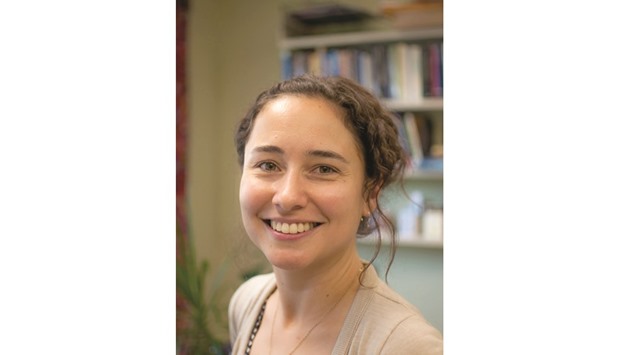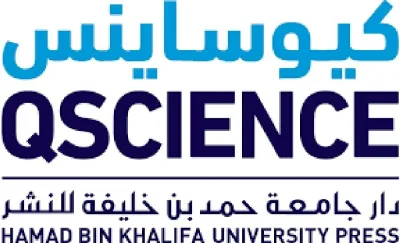Large-scale Hollywood films employ a wide range of consultants, from emergency room doctors to military experts to veteran constitutional lawyers.
Rare is the big-budget adventure, however, that retains a linguist specialising in syntax, morphology, ergativity and nominalisation.
As moviegoers have turned out to see Arrival — Denis Villeneuve’s cerebral alien-invader adventure has grossed more than $60 million domestically since its release — many have been struck by the language symbols at its centre.
Those ornate, hollowed-out inkblots — like Rorschach tests by way of E.T. — have distinguished the film from many science-fiction movies that came before. Few nonhuman languages have ever been shown on-screen in their written form, let alone been made the centre of sophisticated in-movie linguistic study.
To ensure the authenticity of the symbols (and the linguists), producers hired Jessica Coon, a McGill University associate professor in syntax and indigenous languages. Coon has spent years as a field worker studying assorted Mayan languages as well as the First Nations language of Mi’g-maq in Quebec.
That prepared her — sort of — for all that the Heptapods were spraying on about.
“There was a lot in the script that has to do with how we conduct field work to study a language,” Coon said by phone. “But you’d be surprised by all the emails I’ve been getting — a lot of talk about aliens.”
Arrival centres on Louise Banks (Amy Adams), a top specialist recruited by the US government after unidentified aliens known as Heptapods dock their crafts just above 12 global epicentres, including the United States. Louise spends much of the film trying to communicate with the mysterious and only possibly threatening creatures, learning the Heptas’ language and teaching them our own.
The question many of us come away with: How much of a language is this really?
The answer is that it is one — slightly. The inkblots, known as logograms, were primarily devised by the film’s production design team under Patrice Vermette. There were only about 100 of them in use during the shoot (they worked off images included in Eric Heisserer’s script). So it’s not like the full-blown language of Star Trek’s Klingon or Avatar’s Na’vi, where teams were hired to create complex grammatical structures and a culture of armchair enthusiasts and speakers have sprung up in their wake.
Still, there’s a consistency to the logograms as they’re used in Arrival — Coon helped vet them to make sure all the curlicues and flourishes matched on repeated uses of the words and concepts. What’s more, she made sure that Banks’ process for figuring out what they meant looked like that of a person actually studying a new method of communication.
“One of the big misconceptions about linguists is that we’re just people who know and speak and translate languages,” Coon said. “That’s not what field workers — which is what Amy’s character is — actually do. We’re interested in the structural properties; we’re interested in understanding what underlies them. There are between 6 (thousand) and 7,000 languages in the world, and for most we’ve only begun to scratch the surface.”
Coon met with Adams before shooting began to explain how she went about her work; she also received a FedEx package of logograms and was told, essentially, mark them up as you would any set of unfamiliar symbols. Coon tackled them as she would a Mayan dialect, scrawling phrases like “annotate noun” on its sheets and then sending it back to producers. They then incorporated her notes into shots in the film.
The professor says that Arrival’s linguistic ideas are genuine, even if they’re sometimes outside the bounds of the field’s conventional wisdom.
One core idea the movie takes up is the Sapir-Whorf hypothesis, a theory of linguistic relativity that, in its strongest form, argues that language affects thought; an English speaker and Finnish speaker, the hypothesis submits, will think in ways that are fundamentally different.
The theory has generally been discredited in the linguist community. But the movie cleverly finds a way to reopen the argument, asking if the postulate may hold water with nonhuman languages (because nonhumans may think differently than us Earthbound folks in the first place).
By extension, it also asks if Louise might begin to think differently herself once she learns the Heptapods’ language, which is how she’s able to “use weapon” and open up time in the movie’s finale.
While that latter idea is a little more far-fetched, Coon says, the notion of a nonhuman language containing different properties — and thus different thought-processes for its speakers — may be reasonable.
“I don’t know if I would go on the record to say a human learning an alien language would have their brain rewired,” Coon said with a slight laugh. “But what the film leads you to think about is how different (aliens’) perceptual process might be and how their communication system might differ in corresponding ways. Human language is part of the genetic endowment to humans. There’s good reason to think alien language would be different.”
Whether Louise would even be contacted in the first place is another question viewers might have — the idea of high-level military commanders running down Steven Pinker acolytes can at first strain credulity.
But they would, Coon said, because they know a field linguist would be able to map sounds and understand new languages a lot more quickly than anyone else, though she questions the factors that brought them to Louise in the first place. Early in the film, Forest Whitaker’s military commander bursts into the linguist’s office saying she’s atop the government’s list of Farsi experts — a list the government would not have, Coon said, because Farsi is spoken by millions of people.
One key difference between alien and human languages, according to how the former is conceived in the film, is the relationship each civilisation maintains between its written and spoken forms. In human languages, spoken and written forms tend to be the same, just delivered differently; we speak English with a series of sounds and just represent them via letters and words on the page. For the Heptapods, though, there’s no relationship between spoken and written language.
One manifestation of this: In humans’ spoken language, word order is always important (“Dean gave Frank” means something different than “Frank gave Dean”). When humans write down language, they maintain that structure to retain that meaning. But the Heptapods don’t need to maintain that order when writing down language; because the logograms represent entire concepts, sequence doesn’t matter.
If that sounds like a, well, rather nuanced distinction for a piece of movie escapism, it should. Filmmakers were eager to dive into finer scientific points in making Arrival. Because the source material’s novelty came from its authenticity — Heisserer’s script is based on Ted Chiang’s meticulously researched short story — the movie, they reasoned, should reflect a similar genuineness.
“It felt like a great challenge to us — portraying what would they communicate,” said Dan Levine, one of the film’s producers. “We wanted this language to be scary yet beautiful and also linguistically correct.”
Heisserer came up with the language’s circular design, which is of course also key to the movie’s repetitive-time themes. It was Vermette’s wife who designed its distinctive black, inky look. All the logograms were CG; the actors never saw them while shooting a scene.
Coon, based in Montreal, has often travelled to Chiapas and other remote parts of Mexico to research Mayan languages. She said her job is rarely as hard as Banks’ is in the film because there usually are bilingual speakers who can translate — it’s a lot easier to communicate with someone in a language new to each side if you have a go-between who understands both.
Still, with obscure dialects, Coon and colleagues might need to fly as blind as Louise does. The professor said that establishing a baseline by making connections between sounds and letters on one hand and objects and actions on the other, as Louise does, would essentially be the approach field workers take too.
Perhaps Coon’s greatest contribution to the film came about unintentionally.
Heisserer’s script called for Louise to tell a real-life story to Whitaker’s commander about the origins of the word “kangaroo,” involving Aboriginal Australians saying “kangaroo” to inquisitive newly arrived British explorers — which in the former’s language meant “I don’t know,” leading the explorers to name the hopping animals kangaroos. The scene was to be played straight, with Banks getting the better of the military officer.
There was only one problem, Coon said, after filmmakers brought her the script: The story is a myth.
Producers listened and then, with the pivoting power of any good scientific researcher, came up with a solution: They would have Banks tell the story anyway, then have her admit afterward to a colleague (Jeremy Renner) that it was bunk. The moment is one of the film’s biggest laugh lines.
There are, of course, some limits to how closely filmmakers followed linguists’ work. When Banks is seen trying to piece together the Heptas’ language by scrutinising documents, she’s not doing much that linguists would, which is likely to involve a lot more materials and the recruitment of colleagues. It also could be the stuff of years, not weeks.
Instead, the depiction of Louise slaving away in an Army tent is meant to give a frisson of truth, the way the medical examiner in a TV procedural slices open a corpse to lend the basic gist of an autopsy. Actual linguistics isn’t just about holding up some flashcards — it’s laborious and not exactly cinematic work.
“If they’d done justice to all that goes into understanding an unknown language,” Coon said, “you’d just be watching a series of TED talks.” — Los Angeles Times/TNS

Jessica Coon, a McGill University associate professor in syntax and indigenous languages

